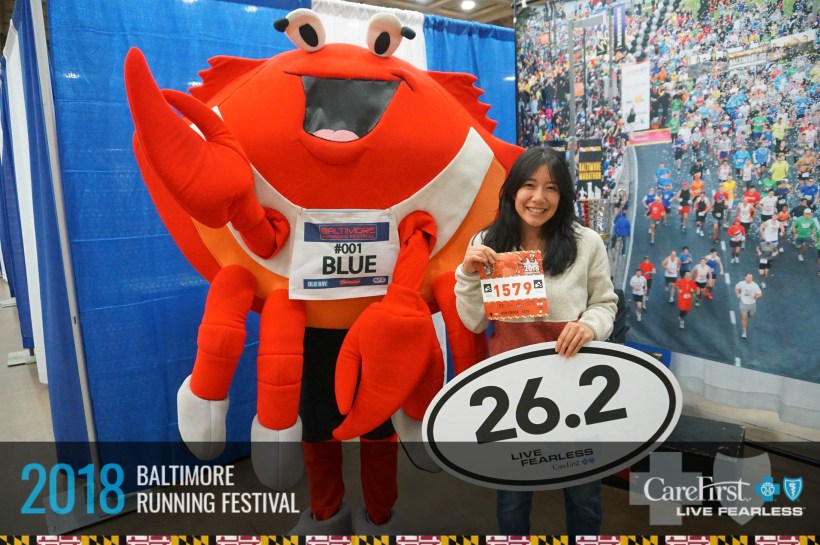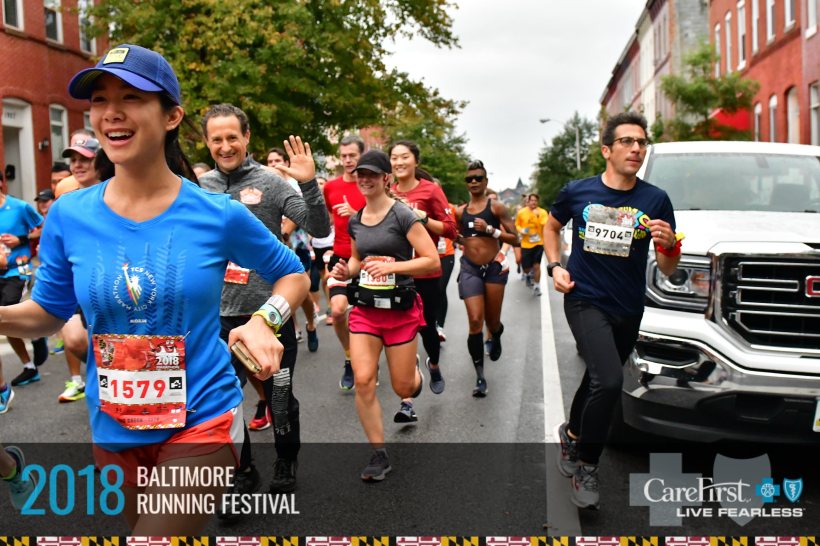I’ve been slightly avoiding writing this race report because I don’t want to accept the fact that it’s over. It’s also been quite some time since I’ve written a race report and I’ve almost forgotten what it’s like to write one.
Nonetheless, here it goes.
Since running the Baltimore Marathon last Saturday, October 20th 2018, I’ve been on an extended runner’s high from this race, which is something that I haven’t felt in a very long time. However, I do have to accept the fact that it’s over and now, I can finally relax, recover, and reboot for the next one.
If you haven’t read my race report from Marine Corps Marathon, which is the last full-marathon I ran in 2016, then you’ll know that this race basically ended up being a disaster. I was well-trained and essentially followed the same plan that I followed for Baltimore Marathon, but what caused Marine Corps Marathon to be a disaster came down to pure lack of pre-race preparation.
I didn’t plan or properly execute travel well for Marine Corps, which snowballed into me breaking the cardinal rule marathon training, which is,
“Don’t try anything new”
Lo and behold, I learned from my mistakes in preparation for Baltimore Marathon and I made it a point to be as articulate about race weekend planning as possible.
I purchased my Amtrak tickets from New York Penn Station to Baltimore Penn Station well in advance (a little over a month in advance) which made it easier to find cheap tickets.
(*Note: When planning ANY type of travel, always get your tickets for transportation FIRST. Then, plan everything else afterwards. Making sure that your travel arrangements are solidified is probably one of the most important things, followed by lodging.)
Since the race fell on a Saturday as opposed to a Sunday, I planned to arrive in Baltimore early Friday afternoon so that I gave myself enough time to settle into my hotel, go to the marathon expo, and do a bit of sight-seeing. I also gave my work sufficient notice that I was taking that Friday off.
I arrived in Baltimore around noon on Friday with my sister. We dropped our belongings off at the hotel which was only a ten-minute walk from the expo, then headed straight to the expo.
The first thing that I was able to do was pick up my race bib. Immediately after, there was an area with a backdrop for photos (And of course, we took photos).


We didn’t stick around too long, as most of the vendors were based in Baltimore which meant a lot of the prizes would likely have to be claimed in Baltimore. I did however purchase a mug that was featured on the virtual race bag website, which the event did a great job of promoting via email (And it clearly worked because I ended up buying something).
One of the main things that I loved about the expo was getting to meet the marathon pacers before the race. I met one of the 4-hour pace group leaders who gave me some great info on when to be at the start line along with an informative write-up on marathon tips as well as a short bio for every pace group leader who was running.
After leaving the expo, we ate lunch nearby, got manicures (so that I could truly relax before the race), and then explored other parts of Baltimore. Fell’s Point was my favorite area because it was right near the water, had a ton of restaurant and bar options, and the cobble stone streets made it feel homey and eclectic.
Once dinner-time came around, I stuck to a traditional “carbo-load” meal and went with Italian. We ate in Little Italy at a place called Germano’s which had authentic Italian and the best bread that I’ve had in a really long time.
From there, my day was done. I had already laid my clothes out along with everything else I needed to get ready in the morning. I was in bed by 11PM and ready for my 6AM alarm the next morning.
In the morning, I left my hotel around 6:45AM with my sister and my boyfriend who were seeing me off at the start line. The marathon race info said to arrive 90 minutes prior to the start time of the race, which was 8AM, but this was factoring in time for checking bags.
Fortunately, I wasn’t checking bags and after talking to the marathon pacers at the expo, they assured me that it was okay to arrive 40-45 minutes prior to the start.
Once I arrived at the start line, I headed straight for the restrooms which were conveniently located inside the Oriole’s stadium. This was a nice surprise and huge perk since everyone is so used to disgusting portable toilets.

Afterwards, I went straight to finding the 4-hour pace group. Once I found them, I met every single pace group leader as well as the other runners who were either trying to run a 4-hour marathon or break 4 hours.
Once the gun went off, the sun had already rose and it was light outside. The weather couldn’t have been more perfect for race day. It was in the high 50’s and slightly overcast.
I hadn’t really studied the marathon course too much because I kind of wanted to be surprised. Before the race, I had reached out to a friend from high school, who was the only person I knew who actually ran this marathon, and she reassured me that it was a great course which went through some great neighborhoods and had a lot of community support along the way.
The first half of the marathon was really pleasant. The start line was near the convention center, where the expo was held, located in Downton Baltimore. From there, we made our way up to Johns Hopkins University, then ran through the Baltimore Zoo where there were some animals being held by the zookeepers whom were cheering us on.
The squeeze through the Zoo was a bit narrow, but since it was a smaller marathon, everyone was courteous enough to make room for each other.
As we made our way to the half-marathon mark, miles 9-12 had a turnaround point where we had to loop back from where we came from. Afterwards, our pace group leaders gave us a heads up that we would soon be joined with the half-marathon runners around mile 16.
This threw me for a loop.
To give some background, not only were people running marathon on their own, but there were also runners who were on 4-people relay teams to run the marathon distance, and then, eventually the half-marathon runners would merge with us. It was a lot to work around.
This was probably the part that made it the most difficult to stick with my pace group. Given the number of people who were running different distances, it became a bit crowded at certain points.
I managed to find my way back to my pace group through the half-marathon merge and I was able to stay with them as we ran around the lake, which was located near miles 20-22. Then, that’s where the rolling hills started taking place.
From what I had heard from my high school friend who ran the race, the course was relatively flat, but based on the second half of the course, I found that it most certainly was not.
I started losing my pace group after mile 22 and had slowed down significantly during miles 23-25. Step by step, they started getting further and further away and that’s when I started losing hope of breaking 4 hours.
I pushed through the last 1.2 miles with everything I had left, which resulted in negative splits, but I ended up missing a sub 4-hour marathon by less than two minutes.
My official time was 4:01:54.
I later found out that the 4 hour pace group finished in a time of 3:59. Though I was disappointed to not break 4 hours, I did however come out with a 6 minute PR! And this was mainly what I came to do.
I followed a solid training plan, was both physically and mentally prepared for the marathon, and ended up breaking a 5-year-old marathon PR.


This marathon will definitely go down in the books as one of my best races (so far). It has also taught me a lot about how to really prepare for marathons the right way.
The fact of the matter is that marathon training takes time.
You have to stick to a solid plan, fuel your body properly, sacrifice a bit of your social life, and most of all, you have to put in the work. It is not a race to be taken lightly and that is what makes it so humbling.
The time and dedication that I had put into this race was exactly what made it as memorable and successful as it was. And now, I can learn from this, improve on it, and continue to better myself for future races.



